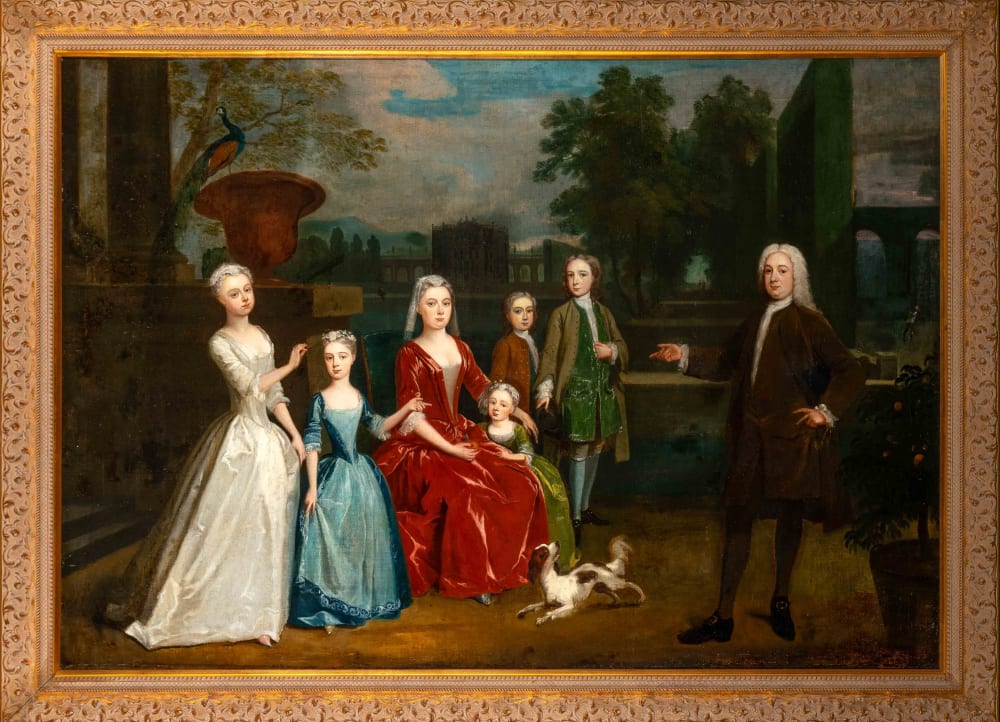Attributed to Charles Philips (1703-1747)
Provenance
Sotheby's New York, January 21, 2004, lot 111
The estate of John J. Caliolo, New York
Literature
Desmond Shawe-Taylor, The Conversation Piece - Scenes of Fashionable Life, Royal Collection Enterprises, 2009
Marcia Pointon, Hanging the Head - Portraiture and Social Formation in eighteenth century England, Yale University Press, 1993
The painting depicts James (Jacques) Dalbiac, his wife Louise (ne de la Porte) and their five children, James, Charles, Louise, Marianne and Martha in the ornamental gardens of a grand country estate.
The extensive gardens extend into the distance with gardeners working in the background and figures strolling through the avenues of trees. A peacock and peahen can be seen on the wall to the left and a potted orange tree to the right. Louise Dalbiac holds an orange taken from the orange tree, aluding to the family's faith and their loyalty to the protestant King William of Orange and their adopted country.
The Dalbiacs were wealthy London silk and velvet merchants of French Huguenot origin who had fled France at the end of the 17th century to escape persecution for their protestant faith. England offered safe refuge and their skills and industriousness allowed them to establish one of the most successful businesses in London's Spitalfields which became a new centre of the silk trade, effectively leading to the collapse of the once dominant French silk industry. Both sons, James and Charles followed their father and Uncle into the family business, successfully growing the family's fortune and each going on to own their own country estates.
A conversation piece is a genre of painting used to describe group portraits of families and friends, often depicted with their servants and family pets and set within an elegantly furnished interior or the garden of a grand country house. They were a celebration of the intimacy of family relations as well as a sign of status, property and the power of succession. The informality of conversation pieces grew popular in 18th century England, allowing the sitters to present themselves in a more relaxed pose, perhaps engaged in intellectual conversation or showing their talents or interests. In this present portrait, the Dalbiacs are shown richly dressed and and at leisure in a grand country house setting, conveying their success and cultural and social aspirations.
Charles Philips (c.1703–1747) was an English artist known for painting a number of portraits and conversation pieces for noble and Royal patrons in the mid-eighteenth century. He was the son of portrait painter Richard Philips and was likely to have learnt the trade from his father. He was primarily a painter of small portraits and conversation pieces. George Vertue notes that 'in painting small figure portraits and conversations (which) has met with great encouragement amongst People of Fashion—even some of ye Royal Family'. In 1732 he painted conversation works for the Duchess of Portland and the Duke of Somerset. Throughout the 1730s these conversation pieces increased in complexity with the subjects becoming more numerous and engaging in more varied activities.






